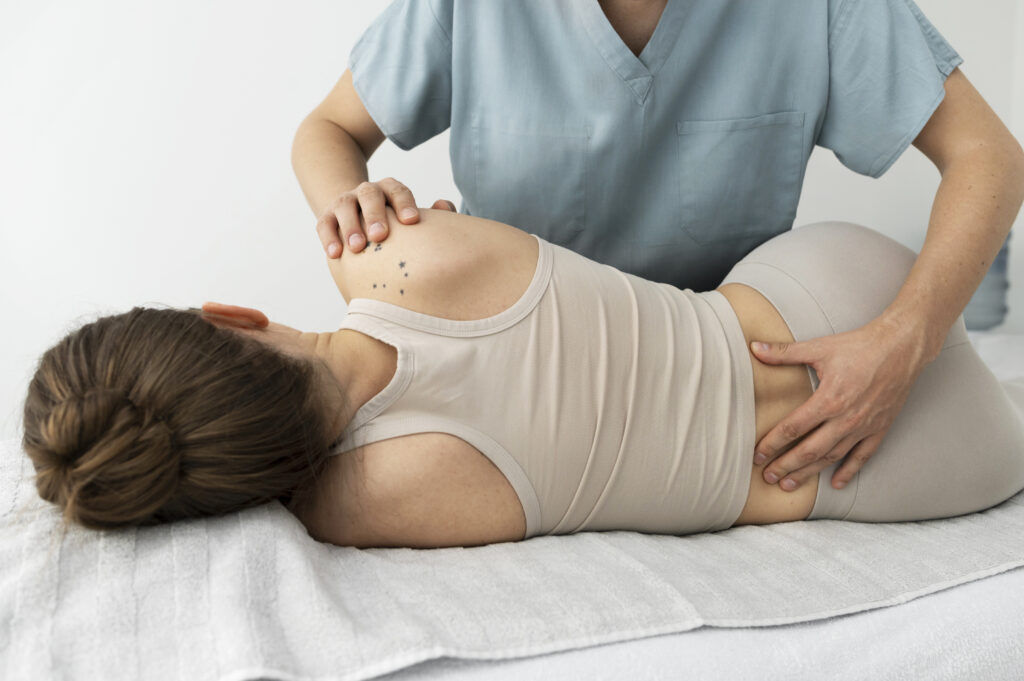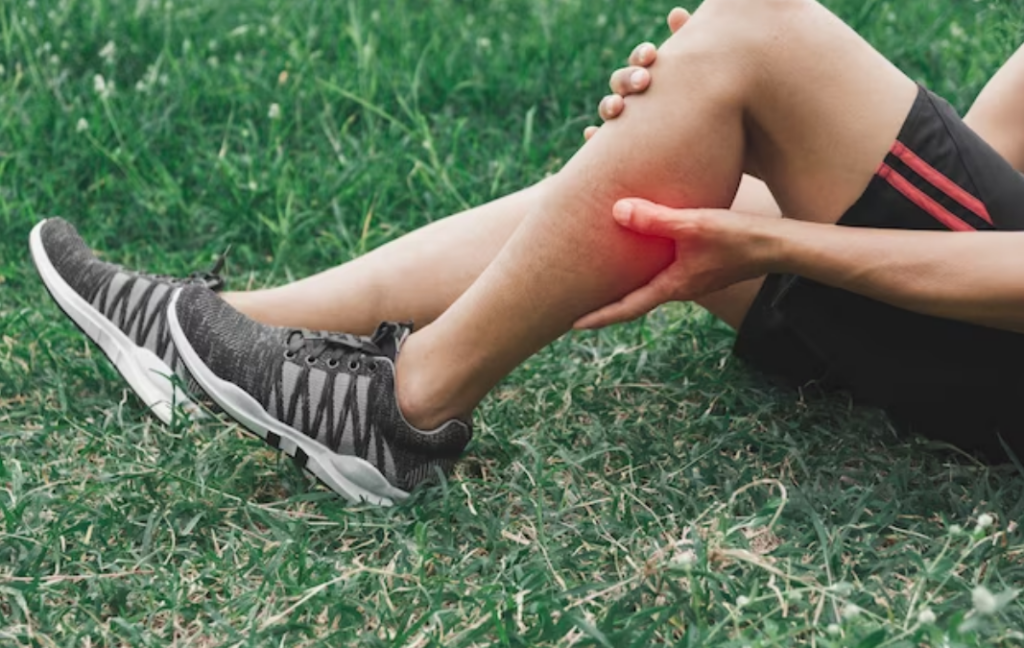If you're looking to enhance your joint flexibility and movement naturally, it is crucial to understand how different elements come into play. You might find that a combination of targeted stretching techniques and strengthening exercises can greatly impact your overall mobility. Plus, don't overlook the role of nutrition in supporting joint health. As you explore these strategies, you'll discover how simple adjustments can lead to more fluid movement and less discomfort. But what specific practices can you implement right away to start experiencing these benefits?
Understanding Joint Flexibility
When it comes to joint flexibility, most people underestimate its importance in everyday movement. You mightn't realize that flexible joints are essential for maintaining a full range of motion in your body. When your joints move freely, you can perform daily tasks like bending down to tie your shoes, reaching for items on a high shelf, or even twisting to look behind you with ease. If your joints are stiff or inflexible, these actions can become uncomfortable or even painful.
Understanding joint flexibility involves recognizing how your joints function and what impacts their range of motion. Each joint in your body, from your hips to your shoulders, is designed to move in specific ways. Factors like age, activity level, and muscle tightness can influence this flexibility. For instance, if you lead a sedentary lifestyle, your joints may become stiff over time, making simple movements more challenging.
You should also consider the role of connective tissues, such as ligaments and tendons, in joint flexibility. These tissues help stabilize your joints while allowing for movement. When they're healthy and flexible, your joints can function effectively. Conversely, tight or damaged connective tissues can limit your movement and lead to discomfort.
Effective Stretching Techniques
Effective stretching techniques are essential for enhancing joint flexibility and overall movement. You can incorporate a variety of methods to improve your range of motion and reduce the risk of injury.
One of the most effective techniques is static stretching. By holding a stretch for 15 to 30 seconds, you allow your muscles to elongate and relax, which helps improve flexibility. Focus on major muscle groups, such as your hamstrings, quadriceps, and shoulders, for a balanced routine.
Dynamic stretching is another great option. This involves moving parts of your body through their full range of motion in a controlled manner. Activities like leg swings or arm circles engage muscles and prepare your joints for more intense movement. It's ideal for warming up before a workout.
Don't forget about proprioceptive neuromuscular facilitation (PNF) stretching. This advanced technique combines stretching and contracting the muscle group. You'll typically need a partner for this, but it can greatly increase flexibility.
Lastly, always listen to your body. If a stretch feels painful, ease off and find a position that feels comfortable yet effective.
Consistency is key, so aim to stretch at least three times a week. Incorporating these effective stretching techniques into your routine will help you maintain joint flexibility and improve your overall movement.
Strengthening Exercises for Joints
Building on your stretching routine, incorporating strengthening exercises is key for joint stability and overall mobility. These exercises support the muscles around your joints, making them more resilient and less prone to injury. You don't need a gym membership to get started; many effective exercises can be done at home with minimal equipment.
Begin with bodyweight exercises like squats and lunges. They target your knees and hips, strengthening the muscles that support these joints. When doing squats, keep your feet shoulder-width apart, and lower your body as if you're sitting in a chair, ensuring your knees stay behind your toes.
Lunges also engage multiple muscle groups and improve your balance.
Resistance bands are another fantastic tool for joint strengthening. Simple band exercises, like seated rows or leg presses, can effectively build strength without putting too much strain on your joints. Start with light resistance and focus on form to avoid injuries.
Don't forget about your core! A strong core stabilizes your entire body, reducing the stress on your joints. Try planks or bridges to engage your abdominal muscles while also working the hips and lower back.
Finally, aim for consistency. Incorporate these exercises into your routine at least two to three times a week. Over time, you'll notice improved joint stability, better movement efficiency, and reduced discomfort in daily activities.
Nutritional Support for Joint Health
A well-balanced diet plays a vital role in supporting joint health and reducing inflammation. To achieve ideal joint function, focus on incorporating specific nutrients that nourish your joints and promote their flexibility.
Start by adding omega-3 fatty acids to your meals. These healthy fats, found in fish like salmon, walnuts, and flaxseeds, help reduce inflammation and may alleviate joint pain.
Next, consider antioxidants, which fight oxidative stress in your body. Fruits and vegetables like berries, spinach, and broccoli are rich in vitamins C and E. These vitamins not only support collagen formation but also protect your joints from damage.
Don't overlook the importance of vitamin D and calcium, essential for bone health and strength. Foods such as fortified dairy products, leafy greens, and fish can help you meet these needs.
Moreover, you should focus on hydration. Drinking plenty of water keeps your joints lubricated and supports overall function. Herbal teas like ginger and turmeric can also be beneficial due to their anti-inflammatory properties.
Lastly, avoid excessive consumption of processed foods, sugars, and unhealthy fats, as they can contribute to inflammation and joint pain.
Holistic Practices to Enhance Movement
How can holistic practices transform your movement and flexibility? By integrating approaches like yoga, tai chi, and mindfulness into your routine, you'll not only enhance your physical capabilities but also nurture your mental well-being. These practices focus on the mind-body connection, allowing you to develop awareness of your body's movements and limitations.
Yoga, for instance, offers a blend of stretching, strength-building, and breathing techniques. As you flow through poses, you'll improve your range of motion while promoting relaxation. This combination reduces tension in your joints, which is vital for maintaining flexibility. Additionally, the focus on breath helps you stay present, enhancing your overall experience.
Tai chi, often described as "meditation in motion," emphasizes slow, deliberate movements. Practicing tai chi can greatly improve your balance and coordination, which are essential for fluid movement. The gentle nature of this practice minimizes the risk of injury while allowing you to build strength and flexibility over time.
Incorporating mindfulness techniques, such as body scans or focused breathing exercises, can further enhance your movement. By tuning into your body's signals, you'll become more aware of areas that may need attention, allowing you to address issues before they escalate.
Incorporate these holistic practices into your daily routine, and you'll likely notice improvements in your flexibility, strength, and overall movement. Not only will your joints feel better, but your mind will also be clearer and more focused, creating a more harmonious balance in your life.
Conclusion
To boost your joint flexibility and movement naturally, combine effective stretching, strengthening exercises, and proper nutrition. Embrace practices like yoga and tai chi to enhance your body awareness and foster relaxation. By integrating these approaches into your routine, you'll not only improve your flexibility but also support your overall joint health. Remember, consistency is key—make these habits a regular part of your life, and you'll feel the positive changes in your mobility and well-being.



